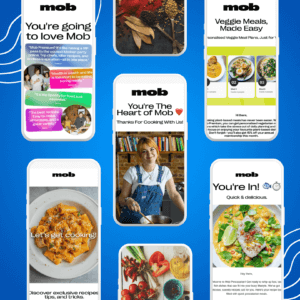In this article, we will look at the top social media metrics you must measure as a business owner or marketer.
So many tools, so many metrics, but which are the right ones?
The answer is.. it depends.
Every business has different goals from their social media marketing.
It also depends on the stage of the user journey your audience is in.

In this article, we will list and explain the metrics for each stage of the marketing funnel. And we recommend picking the most relevant metrics for each stage for your business and for each category we have mentioned below.
Social media metrics to track your marketing activity
These metrics track the effort you or your social media team is putting in creating and publishing content on social media channels.
Content creation rate
This is the volume of content created over a specific time-period
Content publishing rate
This is the volume of content published over a specific time-period
Post topic mix
This is the percentage of posts to each social media network per time-period broken by content topic
Post type mix
This is the percentage of posts on your social media by the post type for example, short video (Reels) vs Carousels vs photos etc
Track AWARENESS and reach from Social Media
Awareness metrics show how many people see the content and how much “attention” your brand content gets.
Reach
Reach is the number of people who the content reaches. You can check the reach of each content you post as well as your total reach.
Impressions
Impressions indicates the number of times people saw your content. If a person sees your content more than once, it’ll be counted as “1” reach but multiple impressions. Hence, the impressions can be higher than reach.
Audience growth rate
Audience growth rate measures new followers you got as a percentage of your total audience. This is the rate at which a brand adds (or loses) audience members per channel
So you might see a high growth rate when you just start to acquire followers.
But over time, you’ll need many more followers to maintain the momentum.
Share of voice
The percentage of people a brand will reach as compared to its competitors.
Share of voice is an important social media metric used in public relations. It’s also a useful metrics for tracking competition or as part of a competitor analysis report.
Social media metrics for ENGAGEMENT
These metrics measure engagement on your social media content and posts.
Amplification rate
The number of shares on average for each post.
Applause rate
The number of approval actions, or virtual “applause,” (+1, likes, etc) you get from your audience per period
Average engagement rate
The percentage of your total audience that has engaged with your content in any way on a social channel per reporting period.
Conversation rate
The number of conversations (comments, replies, etc) going on per social media post
ACQUISITION social media metrics
These metrics measure user acquisition coming from your social media.
Click-through rate
The rate at which your audience clicks on a link within a post on a given social network (number of clicks on a post divided by the number of impressions for the post)
CPC
The Cost-per-click for paid search or social advertising
Leads
The number of potential sales contacts earned through social media per time period
CONVERSION metrics
Now, let’s get to the social media metrics that measure conversions.
Conversions
Number of conversions per time period (email subscriptions, downloads, registrations, installs, etc)
Conversion rate
The percentage of users who take a desired conversion action, found by dividing number of conversions by total traffic per period
Cost per conversion
Dollar amount of how much a brand pays in order to attain a conversion
ROI or return on investment
Revenue generated by social media efforts divided by all known social media expenses
RETENTION social media metrics
Customer retention rate
The percentage of the total number of customers retained in context to the customers that have cancelled.
Customer turnover rate/churn
A measure of the number of customers who leave over a specific period of time
Brand evangelists
Number of customers your brand would consider evangelists based on their social media advocacy
Based on your business requirements, you can pick and choose the ones that matter to you the most.
Don’t forget that these metrics define the success or failure of your social media campaigns.
Keep a track on these along with an eye on the big picture and your overall marketing strategy in mind.
ROI Metrics
Click-through rate (CTR)
Click-through rate, or CTR, is how many people click a link out of 100 people who see it (i.e. the impressions).
The link could be to any page – a product page or a blog on your website or your landing page.
To calculate CTR, divide the total number of clicks for a post by the total number of impressions. Multiply by 100 to get your CTR as a percentage.
Typically, above 1% is a good CTR from social media but it really varies based on your business.
Conversion rate
Conversion rate measures how many converted from your social content to a subscription, download, or sale.
This is one of the most important social media marketing metrics because it shows the value of your social content to fill in your marketing funnel.
Cost-per-click (CPC)
Cost-per-click, or CPC, is the amount you have to pay per click on a social ad.
This number will be shown on your social media channel’s analytics if you run ads or paid promotions on social media.
Cost per thousand impressions (CPM)
Cost per thousand impressions, or CPM, is the cost you pay for every thousand impressions of your social media ads.
CPM tracks impressions, not actions.
These are some of the social media metrics we recommend tracking.
Again, it depends on your business and you should pick the social media metrics that matter most to you.
The metrics you choose to track your social media progress can also change over time, depending on which phase of business you’re in.



